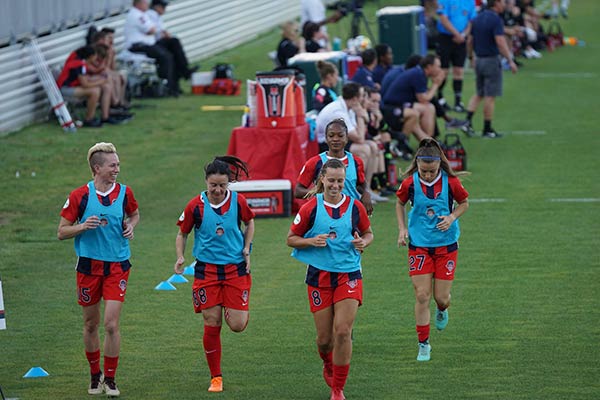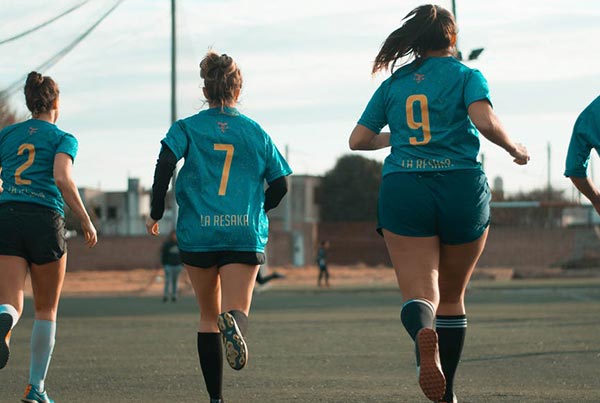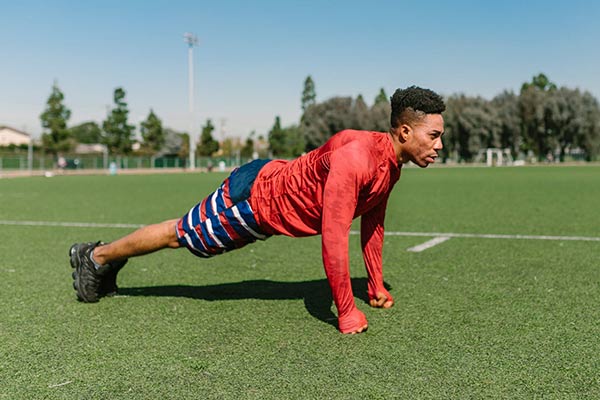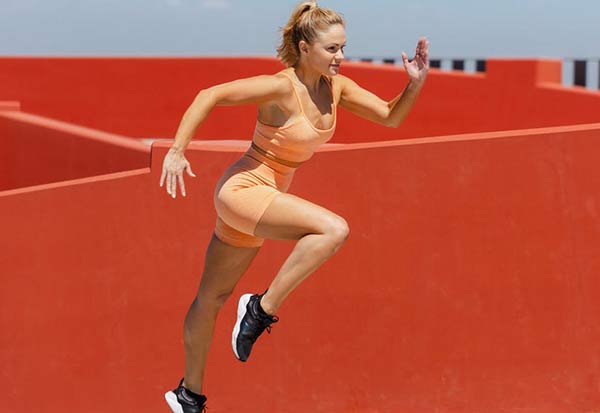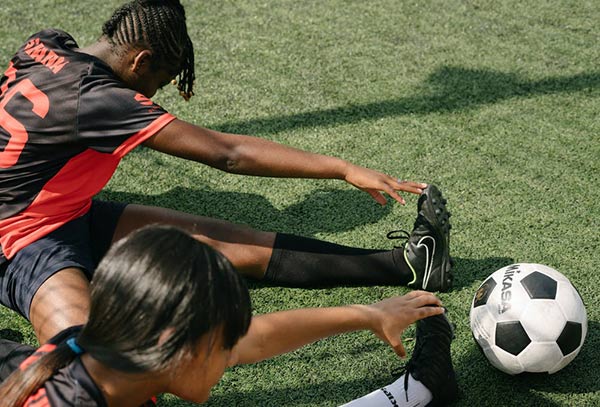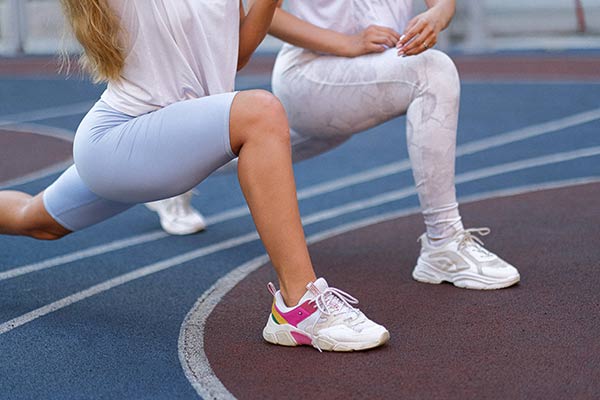How to Warm Up: Top Tips to Prepare You to Perform at Your Best
Warming up before competitive exercise is a widely accepted practice by both coaches and athletes. If you’ve ever played a sport, you’ve probably been through some jogging and stretching exercises before taking the field. Most of us have heard that we should be warming up before exercising. Competitive sporting teams will usually go through some semblance of a warm up, but social sport often sees players walking straight onto the field from the carpark.
So how important is it to warm up? And what does a good warming up routine look like? Amateur and professional sports people alike, the warm up is relevant to you. In this article, we’ll cover all you need to know about warming up before exercise.
Why should I warm up?
Warming up before exercise has a number of benefits for you.
Benefits to performance
Several studies have shown that doing a warm up before participating in sport can improve performance. Sports such as running, cycling, and swimming have demonstrated improved performance after a warm up. Skills such as vertical jumps, long jumps, agility and kicking have also revealed improvements after a warm up. Likewise, warm ups have been demonstrated to improve actual sporting performances, such as in softball, basketball, bowling, and golf.
There are several possible mechanisms for why warm ups enhance performance. Warm ups can increase:
- Core muscle temperature
- Baseline oxygen consumption
- Blood flow to muscles
- Oxygen delivery to muscles
- Nerve conduction rate
Injury prevention
Performing a structured warm up routine can help you reduce the risk of injuries. The FIFA 11+ warm up is a good example of this. In 2008, a study was conducted on female soccer players aged 13-18. The aim of this study was to compare the effects of a specific structured warm up (later known as the FIFA 11+ warm up), compared to a generic warm up, on injury rates. Over a season 125 football clubs completed either the FIFA 11+ warm up or their regular warm ups. At the end of the season they found that the FIFA 11+ warm up group had significantly lower injuries overall compared to the regular warm up group.
The FIFA 11+
The FIFA 11+ have a warming up routine that involves three parts:
- Running exercises involving a partner
2. Strength, plyometrics, and balance exercises for injury prevention
3. Sprints and change of direction running
The program is designed to be performed twice a week before training sessions, with only the running portions performed before a game.
The full FIFA 11+ program can be downloaded here:
What is a good routine for warming up?
So, now you’ve decided you need a structured warm up routine, how do you know what to put in that warm up? A good routine should be able to improve the following performance without being too demanding and making you too tired before you can take the field. It should also be comprehensive and aim to improve strength, awareness, and neuromuscular control during static (still) and dynamic (moving) movements.
Static vs dynamic stretching
There are two main types of stretching that you might include in a warm up. These are dynamic and static stretching. But what does that mean? Static stretches are probably what comes to mind when you think of stretching. These stretches involve holds of 20-30 seconds. On the other hand, dynamic stretches are active movements where joints and muscles go through a full range of motion. These stretches can be functional and mimic the movements involved in the sport you are about to perform.
So which stretch is better?
Traditionally static stretches have been prominent in routines for warming up. However, it has been shown that acute, static stretching can degrade performance on:
- Vertical jumps
- Short sprints
- Tasks requiring maximal voluntary contractions
- Muscle endurance
- Balance challenges
- Reaction time
This is not ideal to include in a pre-game activity where the goal is to get you ready to perform at your best. Additionally, while you may have heard that static stretching before a game can help you prevent an injury, this has not been proven to be true.
Conversely, dynamic warm ups, involving activities such as lunges and squats paired with running drills that include forward, lateral and change of direction movements have been shown to:
- Improve knee joint position sense
- Increase oxygen uptake
- Lower lactate concentration and raise blood pH
- Improve efficiency of thermoregulation
- Improve performance for bicycle sprints and vertical jumps.
Warming up for specific sports
Athletes competing in team sports typically complete an active warm up involving running and mobility exercises, as well as sports specific drills. Sports specific warm ups such as small sided games provide additional benefits over a generic warm up by priming neural pathways and increasing neuromuscular activation. Small sided games are designed to help stimulate the skill and physical demands of a particular sport. It does this by involving activities and movement patterns that are specific to competitive team sport tasks, such as passing, shooting and ball control activities.
Creating a routine?
In summary, the best routine for warming up will be specific to the activity you are preparing for. While no one routine for warming up will suit every sport, it should include a couple of key features:
- It should begin with an aerobic portion of no more than 15 minutes
- Include dynamic rather than static stretches
- Involve some activation sprints
- Replicate skills and movements you will need to perform in the game
- Small sided games replicating movement patterns specific to team sports are helpful
If you are unsure where to begin, the FIFA 11+ program is a good starting point for forming your routine. You can then adapt the to include components and skills relevant to your chosen sport.
Resources
https://www.bmj.com/content/337/bmj.a2469.short
https://www.researchgate.net/profile/Courtney-Mcgowan/publication/282153814_Warm-Up_Strategies_for_Sport_and_Exercise_Mechanisms_and_Applications/links/565668af08ae1ef9297a04cc/Warm-Up-Strategies-for-Sport-and-Exercise-Mechanisms-and-Applications.pdf
https://www.tandfonline.com/doi/pdf/10.1080/02640414.2013.802922?casa_token=szecMk0p-XsAAAAA%3AKjwhPHlWA0RabvNSIRuU-3HCr1vCclertjANvI2rEClHMMOByoj7eVG3AeQESubyFUcvaTNlNw&
https://www.researchgate.net/profile/David-John-Bishop/publication/278700318_Warm_Up_I/links/5603950708ae4accfbb8b812/Warm-Up-I.pdf
